#Solidago caesia
Text
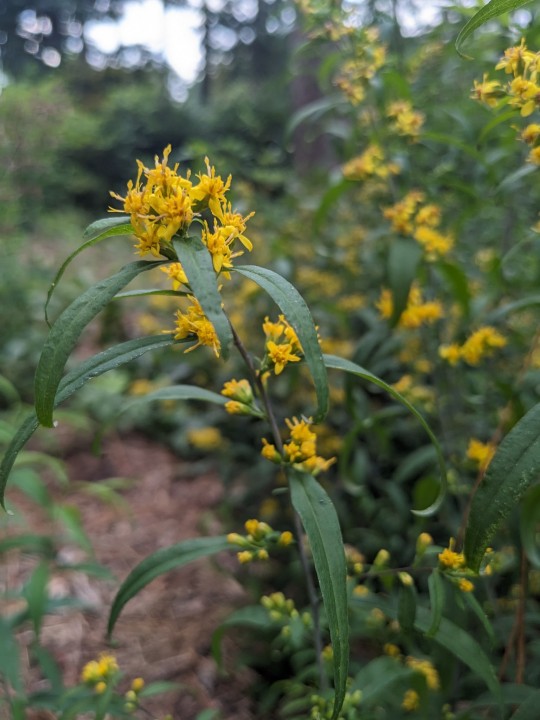
Solidago caesia / Wreath Goldenrod at the Sarah P. Duke Gardens at Duke University in Durham, NC
#Solidago caesia#Wreath Goldenrod#Blue-stemmed goldenrod#Blue stemmed goldenrod#Woodland goldenrod#Goldenrod#Native plants#Native flowers#Nature photography#Sarah P. Duke Gardens#Duke Gardens#Duke University#Durham NC#Durham#North Carolina#Flowers
2 notes
·
View notes
Video
n148_w1150 by Biodiversity Heritage Library
Via Flickr:
Flowers of the field and forest.. Boston,S.E. Cassino,1882.. biodiversitylibrary.org/page/17534373
#Gerstein - University of Toronto (archive.org)#bhl:page=17534373#dc:identifier=http://biodiversitylibrary.org/page/17534373#University of Toronto - Gerstein Science Information Centre#flickr#solidago caesia#Blue-stemmed goldenrod#wreath goldenrod#woodland goldenrod#botanical illustration#scientific illustration
0 notes
Text

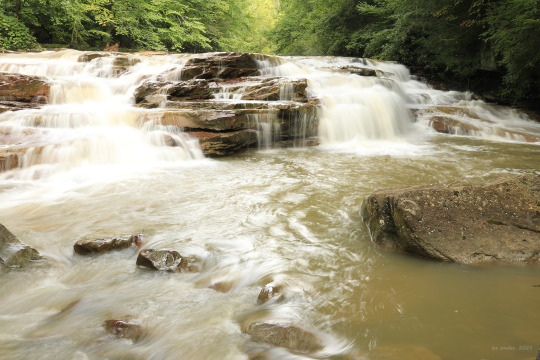


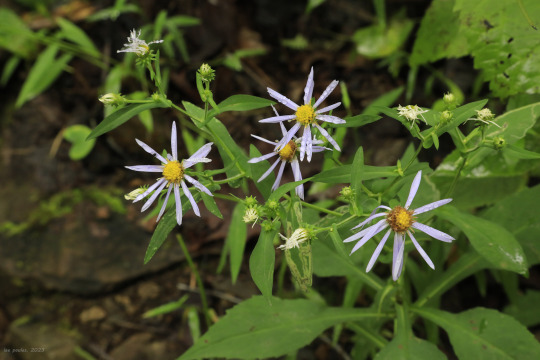
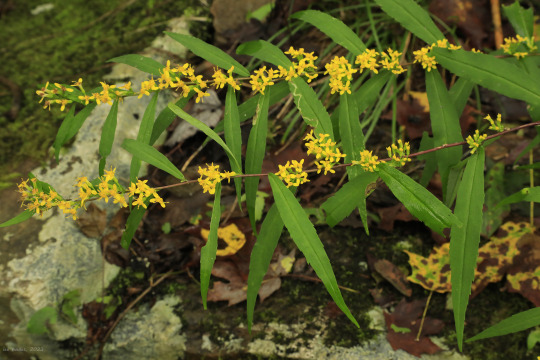
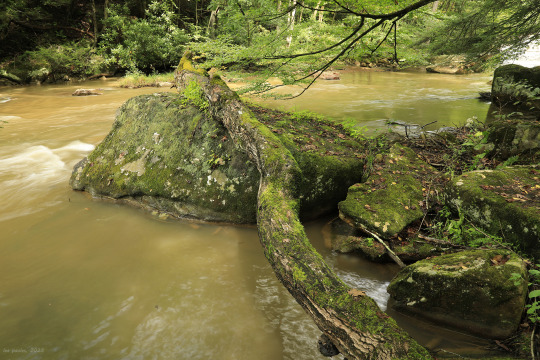
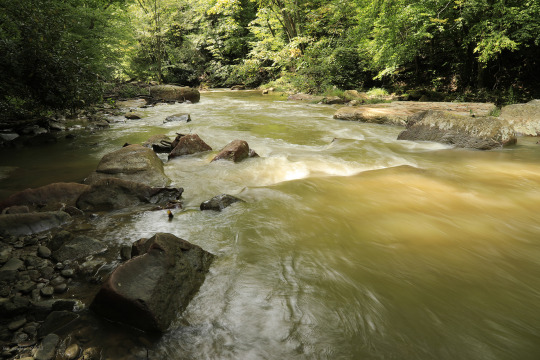
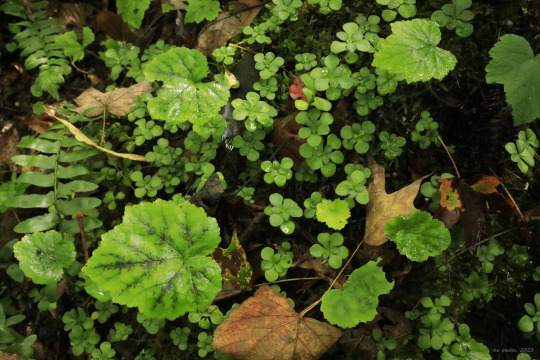

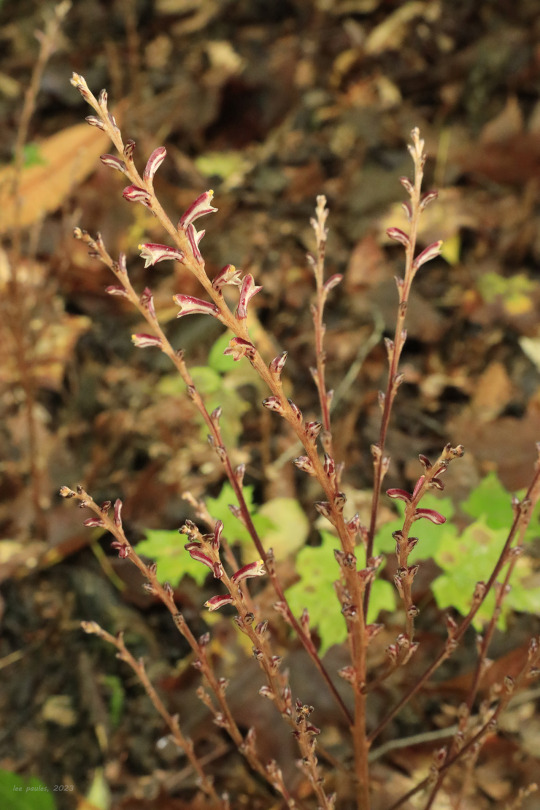
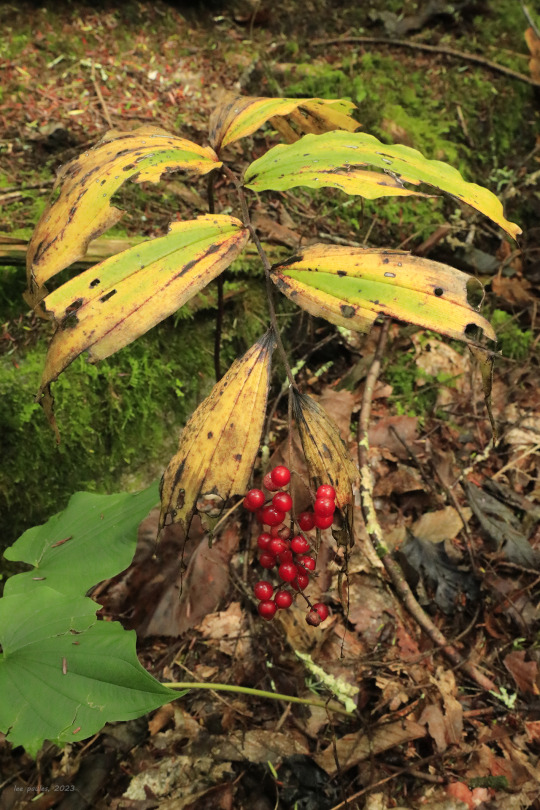
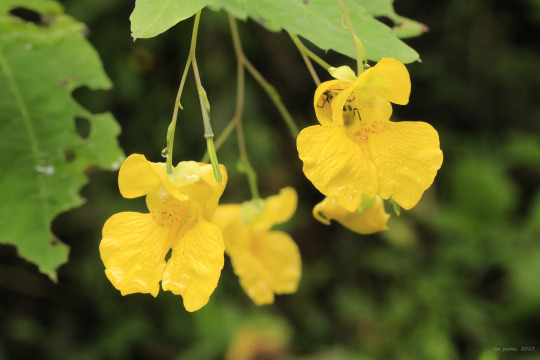
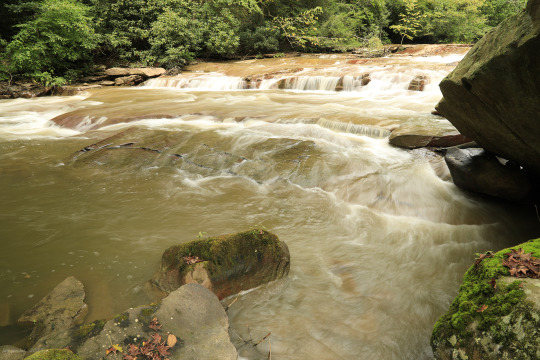

Despite its undignified name, Muddy Creek is a lovely mountain stream that normally runs fast and clear on its steep descent to Cheat River. But after a week of heavy rain in NC-WV, the stream looked a bit murky yesterday. Not even the sediment washing away from the mountains dims its beauty in my eyes. And the enchanting, moss-encrusted forest along its bank holds its own late summer treasures.
From top: great blue lobelia (Lobelia siphilitica), which pairs beautifully with cardinal flower to provide late summer color in a native wildflower garden; white wood aster (Eurybia divaricata), which is the most common of the shade-loving white asters in this area; crooked-stemmed aster (Symphyotrichum prenanthoides), also known as zigzag aster, whose clasping, spatula-shaped leaves distinguish it from big-leaf aster, another woods-loving aster with lavender flowers; blue-stemmed goldenrod (Solidago caesia), whose spreading, yellow-flowered stems provide stunning late-season color in a native wildflower garden; an intensely-green collage of moss, woodland stonecrop (Sedum ternatum), Christmas fern (Polystichum acrostichoides) and heartleaf foamflower (Tiarella cordifolia), which I am trying hard to reproduce in my own native wildflower shade garden; the shaggy-maned stem of Coker's Amanita (Amanita cokeri), one of the most impressive mushrooms of Appalachia's summer forests; beech-drops (Epifagus virginiana), a parasitic plant that grows and subsists on beach tree roots; the bright red berries of false Solomon's seal (Maianthemum racemosum); yellow jewelweed (Impatiens pallida), whose explosive seed pods give the plant its other common name, pale touch-me-not; and narrow-leaved tick-trefoil (Desmodium paniculatum), also known as panicled tick-trefoil, a late summer pea whose sticky seed pods commonly hitch rides on shoes and boots.
#appalachia#vandalia#west virginia#wildflowers#flora#summer#muddy creek#cheat river#preston county#fungi#coker's amanita#great blue lobelia#white wood aster#crooked-stemmed aster#zigzag aster#blue stemmed goldenrod#woodland stonecrop#christmas fern#heartleaf foamflower#beech-drops#beech drops#false solomon's seal#solomon's plume#yellow jewelweed#pale touch-me-not#narrow-leaved tick-trefoil#panicled tick-trefoil#falls#rapids#mountain stream
103 notes
·
View notes
Text
Goldenrods
It’s nowhere near the fall hayfever season, but I thought I’d PSA anyway.
Hayfever is caused by RAGWEED (Ambrosia artemisiifolia and Ambrosia trifida where I live).

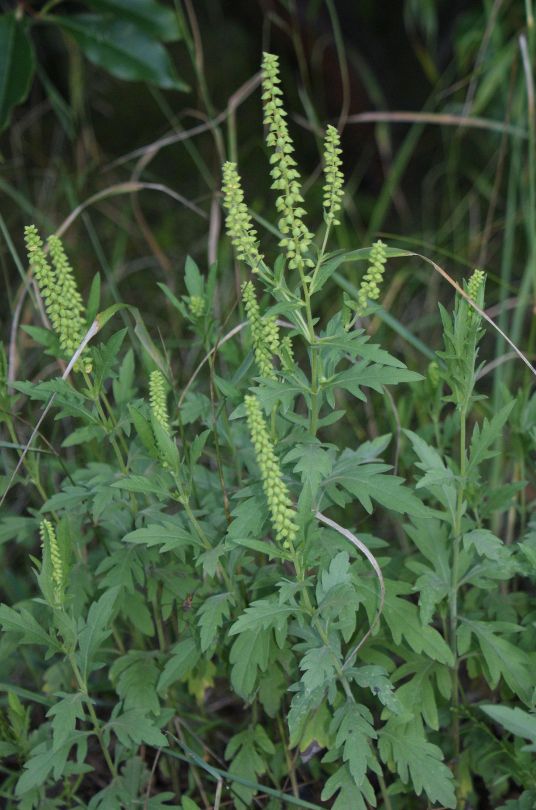
NOT. Goldenrod (Solidago, Oligoneuron, Euthamia). It is impossible for goldenrods to even cause hayfever since their pollen isn’t released to the wind. Goldenrods are beautiful, with some edible parts, some medicinal properties, and middle of summer through fall pollenators love them.
Non-exhaustive list of goldenrods
Euthamia graminifolia (Flat-top goldenrod):

Oligoneuron rigida (Stiff goldenrod):

Solidago bicolor (Silverrod):

Solidago caesia (Blue-stem goldenrod):
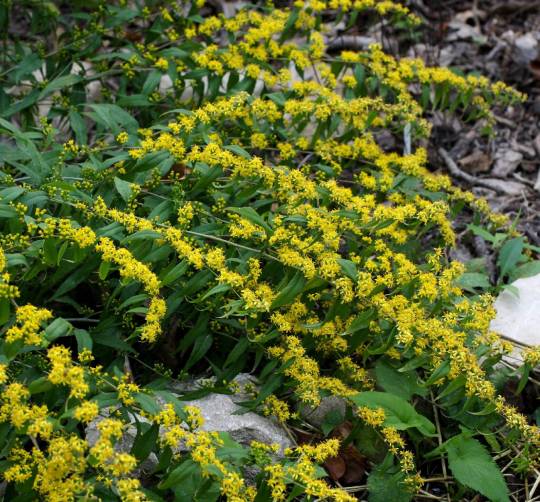
Solidago canadensis (Canada goldenrod):

Solidago flexicaulis (Zigzag goldenrod):

Solidago juncea (Early goldenrod):
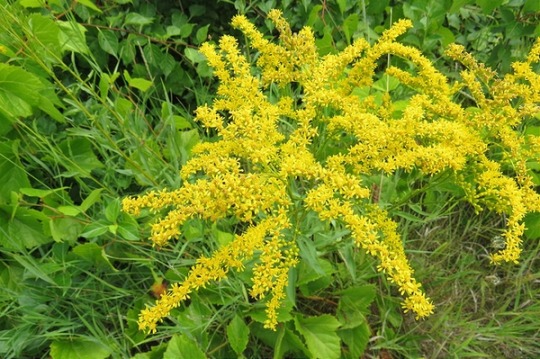
Solidago missouriensis (Prairie goldenrod):
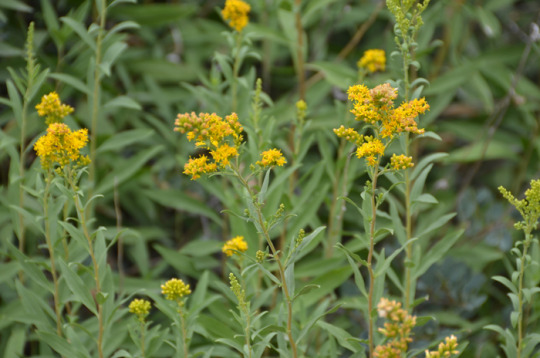
Solidago multiradiata (Alpine goldenrod):

Solidago nemoralis (Gray goldenrod):

Solidago odora (Anise-scented goldenrod):

Solidago ohiensis (Ohio goldenrod):

Solidago patula (Rough-leaf goldenrod):
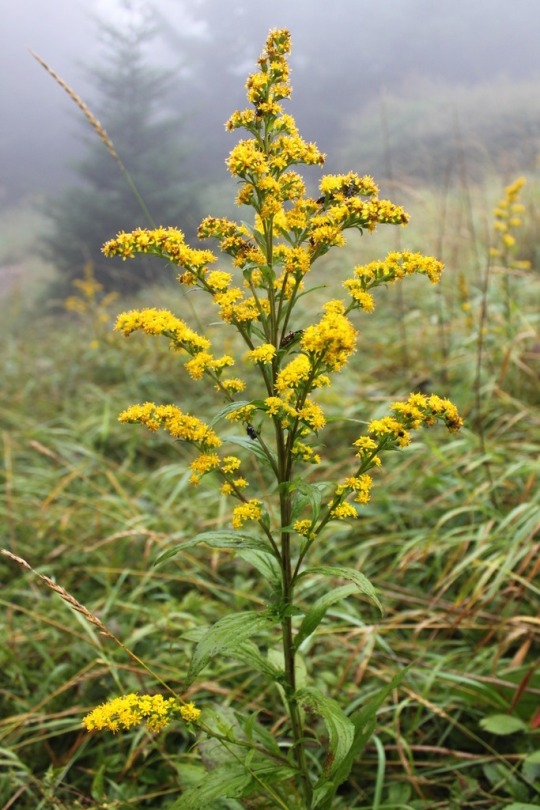
Solidago ptarmicoides (Upland white aster):

Solidago rugosa (Wrinkleleaf goldenrod):
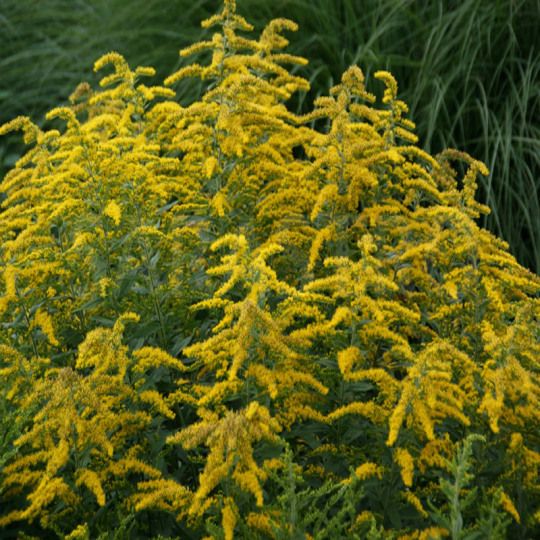
Solidago simplex (Spike goldenrod):
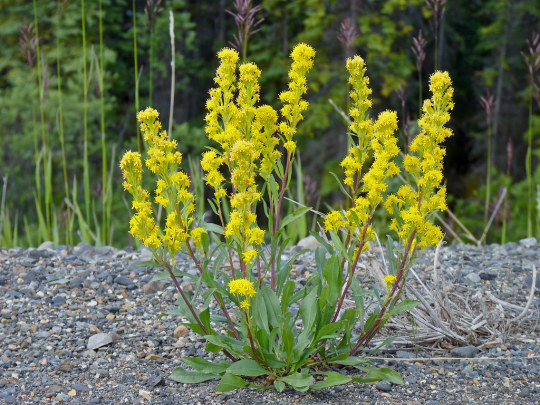
Solidago speciosa (Showy goldenrod):
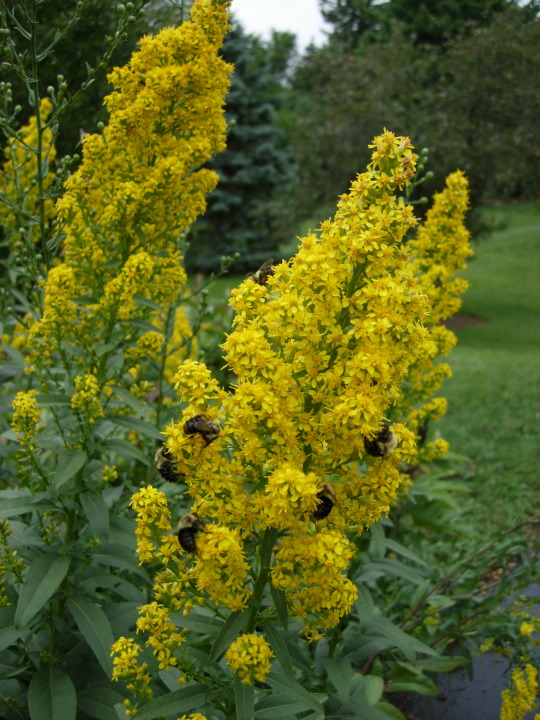
Solidago uliginosa (Bog goldenrod):
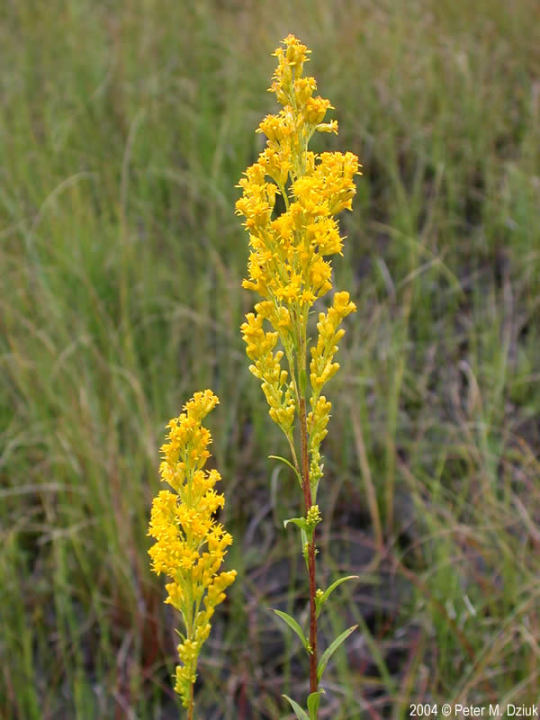
The only drawback is that many goldenrod species spread a lot and quickly if you don’t keep on top of those rhizomes. But if you need to fill a space in a relatively short period of time, why not try some in your garden? They’ll grow up green through spring and summer and put on a show in the fall (earlier depending on the species)!
#long image post#goldenrods#hayfever#ragweed#Ambrosia#Solidago#Oligoneuron#Euthamia#flowers#yellow flowers#native species of North America#North American native plants#pollinator plants
18 notes
·
View notes
Text
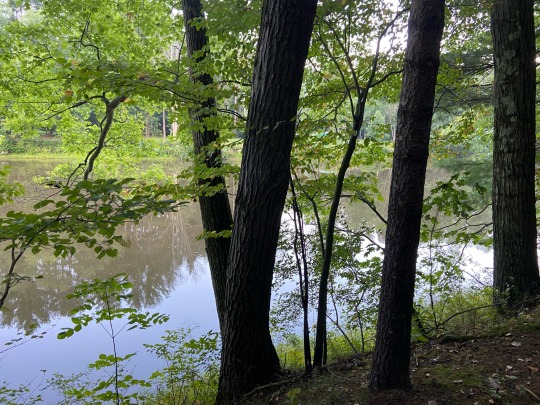
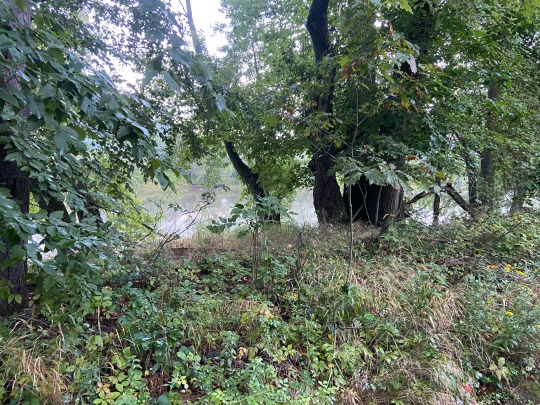

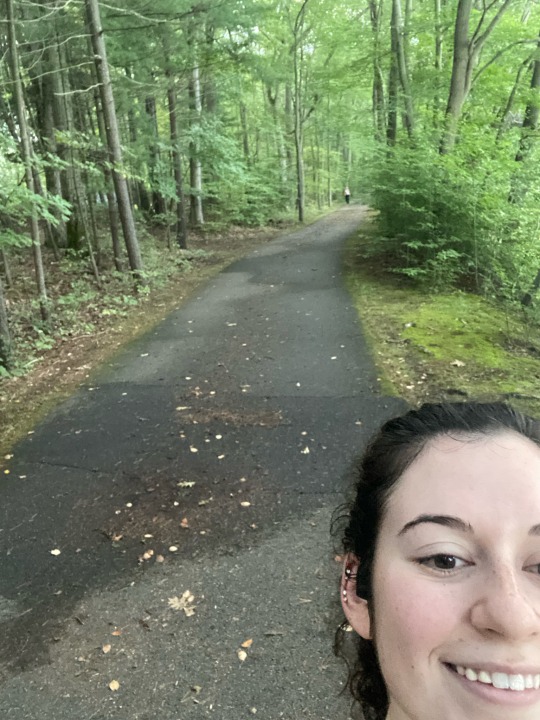
Male Fern: The male fern (aka dead man’s fist) thrives in dry areas. It can be used to treat nosebleeds and wounds.
Cattail: The cattail (aka typha) can produce two types of dower spikes, one male and one female. They can be woven into mats, baskets, or be used as torches.
Crooked-Stemmed Aster: The crooked-stemmed aster (aka symphytorichum prenanthoides) prefers variations of sun exposure and usually does well in wooded areas. They have been used to treat weak skin, pain, fevers, and diarrhea.
Virginia Smartweed: The Virginia smartweed (aka polygonum virginanum) is an aquatic perennial. They have been used for diarrhea, bleeding, and the common cold.
Wild Indigo: Wild indigo (aka baptisia tinctoria) can be used as an asparagus substitute. It can act as a natural repellent against mosquitos, snakes, and ticks.
White Snakeroot: White snakeroot (aka eupatorium rugosum) caused milk sickness in the 1800s for settlers moving to the Midwest. The root tea is used for kidney stones and fever treatment.
Blue-Stemmed Goldenrod: The blue-stemmed goldenrod (aka solidago caesia) can spread aggressively in an area. They provide food and habitat for many birds and small animals.
Attendance:
“This was thanks to the chalk, which the artist used to make his paints go further, to thicken them so that they stood off the canvas, and to make glazing layers more transparent — because it has a low refractive index, chalk is almost completely translucent in oils.” (pg. 57)
I found this interesting because I never knew chalk was translucent in oils. I always thought of chalk as something you use on the playground as a kid where you would draw hop scotch, or drop it on the pavement and watch it break and get upset. This passage made me think of when I used to work as a camp counselor and drew a 160 tile hop scotch for the children I was looking after. I did not know that it is used to thicken paints and make glazing layers more transparent.
5 notes
·
View notes
Photo
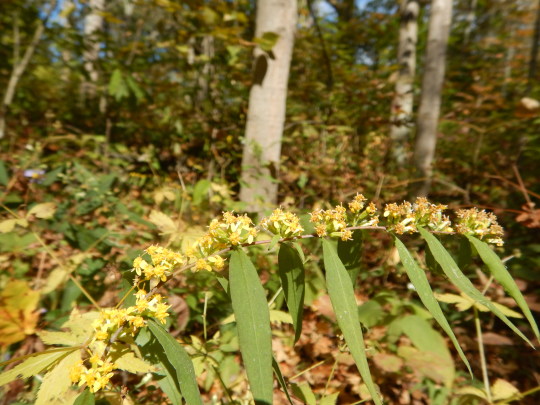



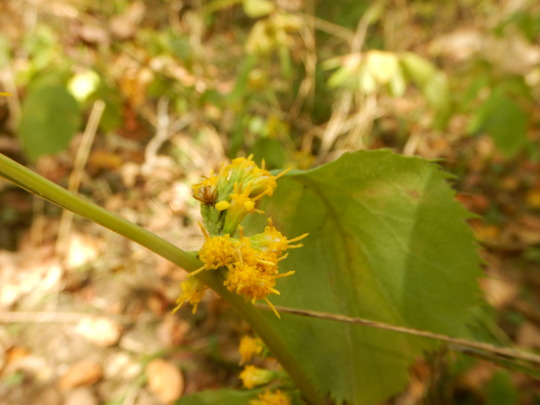


Solidago caesia (blue stem goldenrod, top) and Solidago flexicaulis( zig zag goldenrod, bottom), are both species where flower clusters appear predominantly at the petioles. They are both upper dry oak hickory woodland to open woodland species as well. Some consider these species the easiest goldenrods to ID in the United States and Canada due to their unique clustering and morphological features.
22 notes
·
View notes
Text
Collected on This Day: September 6
by Mason Heberling
September 6, 1952: 66 years ago
...and recollected September 6, 2018
These specimens (and more) were collected on September 6, 1952 near Compton’s Mills (near Salisbury, PA, Somerset County) by Leroy Henry and Werner Buker. Henry was a long time Curator of Botany at the museum (1937-1973), and Buker was a math teacher at Perry High School, who was also a very active botanist at the museum. Collectively, they collected nearly 50,000 specimens in the Carnegie Museum herbarium!
These specimens are part of a larger project ongoing in the Section of Botany at the Carnegie Museum. Starting last year, we are revisiting historic sites across Western Pennsylvania, where former botanists have collected. We are revisiting these sites in order to record and monitor biological change in the Anthropocene. Are the same species present? (local extinction or persistence) Are new species present? (newly introduced invasive species)
We are also recollecting specimens from these historic sites to compare specimens collected decades to a century ago, to those collected today. For example, how are species affected by climate change? Are species flowering earlier? How are plant communities affected by invasive species and introduced pests? These are just a few of the many questions that can be answered.

With generous permission of the current landowner, we are able to recollect specimens at Compton’s Mills. Compton’s Mills is a site of a family-run historic grist/flour mill built in 1872 on the foundation of an even earlier mill. We have done some recollections at this site last spring, including specimens of the endemic Appalachian violet (Viola appalachiensis). Compton’s Mills is also of special importance, as specimens collected from this site were used by Leroy Henry to formally describe species new to science (known as “type” specimens). Read about our recollection in Spring 2017.
This year we are revisiting in the late summer/early fall.
With data from Compton’s Mills, in addition to repeatedly revisiting other sites across Western Pennsylvania, we will be able to document and understand a century of past, present, and future impacts of humans on the landscape-- a hallmark of the Anthropocene. Some of our first recollections were featured in the We Are Nature exhibition. Although this exhibition recently ended, specimens from this project will remain on display in the Hall of Botany.
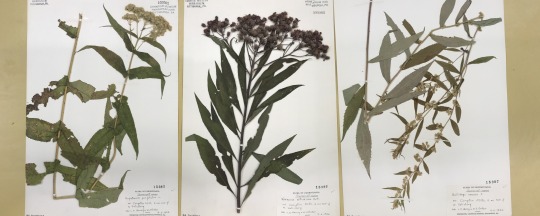
The wildflower specimens pictured here are welcomed signs of late summer and fall (left to right): common boneset (Eupatorium perfoliatum), tall ironweed (Vernonia altissima), wreath goldenrod (Solidago caesia).
Mason Heberling is a Postdoctoral Research Fellow in the Section of Botany at the Carnegie Museum of Natural History. Museum employees are encouraged to blog about their unique experiences working at the museum.
#carnegie museum of natural history#collected on this day#botany#plants#compton's mills#pennsylvania#appalachia#wildflowers#western pennsylvania#appalachian violet#viola appalachiensis#common boneset#eupatorium perfoliatum#tall ironweed#vernonia altissima#wreath goldenrod#solidago caesia
15 notes
·
View notes
Text

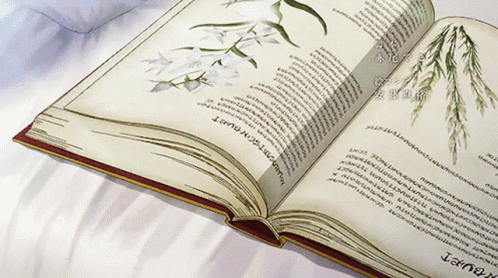
✧ 𝙢𝙖𝙨𝙩𝙚𝙧𝙡𝙞𝙨𝙩𝙨 ✧
welcome to my conservatory ❁ུ۪。 ° 𓂂 ˚⋆
𝙥𝙡𝙖𝙣𝙩𝙨 𝙞𝙣𝙫𝙚𝙣𝙩𝙤𝙧𝙮:
— basil [poems masterlist]
ocimum basilicum | 6-8 hours of sun daily, remind him that he's pretty or his leaves will turn 29° west, needs lots of moisture.
— spearmint [pick a cards masterlist]
mentha spicata | partial sun and shade, give her space or she becomes cranky, only pick one leaf a day and ask for her permission beforehand.
— thyme [blog hashtags masterlist]
thymus vulgaris | likes the sun more than the shade, very independent personality, sing him old songs in your native tongue and read him poems.
— goldenrod [paid readings masterlist]
solidago caesia | loves the sun more than life itself, never too picky, remind her of a time when people danced and sang together whenever you water her and watch her dance along

𝙖𝙗𝙤𝙪𝙩 𝙩𝙝𝙚 𝙤𝙬𝙣𝙚𝙧:
click me <3 | tips!

𝙘𝙤𝙥𝙮𝙧𝙞𝙜𝙝𝙩 © 𝟮𝟬𝟮𝟮 𝙥𝙚𝙘𝙪𝙡𝙞𝙖𝙧𝙭𝙖𝙛𝙩𝙚𝙧𝙣𝙤𝙤𝙣
𝙖𝙡𝙡 𝙧𝙞𝙜𝙝𝙩𝙨 𝙧𝙚𝙨𝙚𝙧𝙫𝙚𝙙
credit for the gif goes to its rightful owner
63 notes
·
View notes
Photo










A Survey of the Best Goldenrods for your Garden (Part I)
Introduction:
Why goldenrods?
There are currently 136 species in the genus Solidago, three more than the last time I checked the astereae lab. (see https://uwaterloo.ca/astereae-lab/) Most of these species are native to North America. For those who see them on the roadsides as masses of weedy generic golden flowers, it seldom occurs to them that from July through October they are most likely witnessing the blooms of a dozen or more species. By far the most common and most widespread and aggressive goldenrods throughout the Americas are those within the Triplinerviae group, which includes S. canadensis, S. gigantea, and S. altissima all of which can be maddeningly difficult to accurately distinguish even for the experts. Weedy though they may be, there are many plant lovers including those in the cut flower trade who understand the value of the majestic diamond and pyramidal flower forms of the canadensis types. A few hybrids have been developed for the cut flower trade that are generally not available to gardeners. Cultivars sold in the nursery like S. canadensis ‘Goldenbaby are smaller diploid forms that are less aggressive and more manageable. But on the whole, only recently do we see a wider variety of garden worthy species entering the nursery trade.
This is a great benefit to gardeners as many of these varieties are well behaved and very attractive plants that don’t at all resemble their weedy cousins except in their trademark golden flowers. And it must be said, while posing the question, why goldenrods, that they do not cause allergies as they have long been accused of doing. Their pollen is heavy and sticky and not carried in the wind. It has been guilt by association, a purely circumstantial case, while the real culprits (one of them ragweed) are off the hook. Goldenrods depend on insects for pollination.
Which brings me to the overwhelming benefit to growing goldenrods: they are one of the most important food sources in the late season for pollinating insects, especially bees. And goldenrod honey is delicious. Gardeners who are aware of the decline in bee species throughout the world, should straightaway run to their nearest online nursery and begin shopping for appropriate Solidago species for their region of the country. Lastly, in addition to providing you a pictorial and descriptive list of some of my favorite forms, I do so to show another advantage to growing goldenrods. It has to do with form. If you think about most perennials, you notice that many plants come in a variety of colors, but by and large represent a single form. Goldenrods do it the other way around--they come in only two colors, overwhelmingly yellow/golden and a couple of white ones, but they come in a wide variety of flowering forms. I hope to introduce the unfamiliar to some of the more striking and unusual ones, that should provide imaginative gardeners with a lot of landscaping and design opportunities.
1 & 2. Solidago bicolor. Also called silver rod, this is one of the white goldenrods well suited to the garden. Beloved by bees and has a light lily-like or honey suckle fragrance. Widely adaptable in Eastern North America, from the Maritimes south to Alabama and Georgia and as far west as Michigan and Illinois. In the wild, it is often sparse and underdeveloped and makes little impression. In cultivation it can make a rich flowering stand in late summer and early fall producing refreshing cream-colored wands over a 4 to 6 week period. Planted in a mass with Helenium, Sedum, Persicaria or Panicum it will have people asking, ‘what’s that’, and ‘goldenrod, really?’ Can sustain winter damage, but I’ve been growing it for 7 years and still have a few of the original seed grown plants. Reseeds will replace spent plants, and its slender profile won’t take up too much room in your garden. Full sun and part shade, where it can reach 4ft in height. Usually about 2 to 3 ft in full sun.
3, 4 & 5. Solidago riddellii. In my opinion this is the finest and most versatile goldenrod you can grow in your garden. It has an elegant and striking presence from May to November that is just as suitable for refined plantings as it is for the wild or natural garden. What you have here is a distinctive and elegant foliar profile, strong stems and rich, vibrant flowering. Another plus (image 5) is that the spent flowers retract neatly and the golden color of the phyllaries shines through, so there is no drab phase many flowers and most goldenrods pass through. Rather a pleasant golden/brown appearance enhanced by bright chartreuse leaflets below keep it shining through October, along with flashes of variegated colored fall foliage in shades of gold, orange, red, pink, purple and bronze. Finally soft-gray mounding seed heads complete the show in November. This long-lived clumper is a native of moist conditions, but it performed beautifully in the drought conditions that 2020 brought. So at the very least it can withstand the occasional drought. 2 1/2 to 3 1/2 ft in height. Difficult to find in nurseries or from seed. I purchased my seed from Ernst Conservation Seeds. The prices per pound are staggering and have gone up considerably since I first purchased seed in 2013 but smaller portions can be purchased at more affordable prices. Pollinator paradise.
6 Solidago rugosa ‘Fireworks’. This variation of S. rugosa was discovered in North Carolina in 1973 and registered as a cultivar in 1993. A more beautiful structural plant is hard to find, that and the thrilling lateral blooms cascading in all directions puts this one in my top 5 goldenrods. Likely a tetraploid as it blooms a good month later than the native S. rugosa that grow in Vermont, and it displays a tetraploid’s vigor. This plant is tough as nails and completely immune to flopping or collapse. You can park a bike against it (not saying you would but sometimes kids do the darndest things). The foliage is unremarkable and coarse (thus the name rough or crinkle leaf goldenrod), but notice in image 6 that even at bloom time it maintains most of its lower foliage, so you don’t have to hide ugly legs as you do with most Asters and many fall blooming perennials. You do have to watch this one over time. This slow spreader won’t take over your garden, but a single plant will spread outward into a 3 or 4ft stand, with its underground rhizomes working their way into other plants. Very long lived and hardy. It blooms so late in the north my experience is that it never has time to set seed before it is cut down, either that or it is sterile. Long and short you won’t be troubled with seedlings.
7 & 8: Solidago caesia ‘Blue Stem Goldenrod’. Here is one that can be grown in sun or shade, and a bright graceful addition it is to the shade garden given it blooms in August and September when very little is flowering in anyone’s shade garden. It has lax stems that tend to arch, cascading on slopes and showing off the lovely linear quality of its axillary blooms. Quite bushy in full sun, sparser in shade. This is one of the more delicate goldenrods with its slender purple stems coated with a blue powder, thus the name (reminding me of wild Concord grapes of childhood that ripen at the same time as these bloom) Image 8.
9 & 10 Solidago speciosa ‘Showy Goldenrod’. Put this one in your top 5 goldenrods as well. The shorter diploid version is pictured in image 9 and the much taller bolder tetraploid (image 10) that blooms very late in the North. Image 10 was harvested from the disturbed ground along the NJ Turnpike about 3 years after construction occurred. There are foliage differences as well. The tetraploids I harvested showed no dentation on the leaves (they were entire and longer and smoother than those of the diploids I harvested from Central Massachusetts). I believe most of what you will find offered in the wildflower nurseries such as Prairie Moon and High Country Gardens are the earlier blooming, shorter diploid types. But don’t ask the nurseries, they will neither know nor care. If it says to 3ft, it’s probably diploid, if it says to 5ft, possibly tetraploid. Some of the NJ populations were as tall as 6 1/2 ft, which of course makes a lot of difference if you are planning a garden. Majestic, non-invasive clumps, with quarter inch individual flowers give these full flower heads their showy quality and what I can only describe as a radiant glow from a distance. Another plus are the often deep red stems that intensify in color in the fall and make for a spectacular contrast with the cloud-like off-white seed heads. A stand of these in your pollinator garden is definitely worth growing.
12 notes
·
View notes
Photo


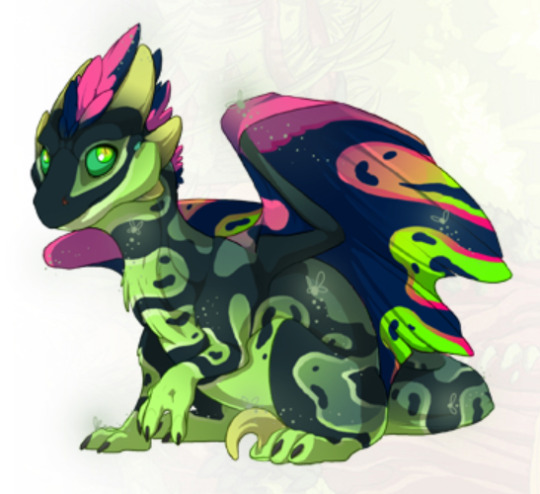
Wildclaw children!
From Arthur and Cheena, so they’re all three python/morph/firefly
We have -
Solidago (wildclaw male), named for Solidago caesia, blue-stemmed goldenrod, for his goldenrod morph gene and colouring
Clarissima (wildclaw female), named for a type of fern, Athyrium filix-femina ‘Clarissima Jones’, for her fern colouring
Jules (wildclaw male), named for Dr Jules Guyot pears, which have pink blush to them, for his pear and radioactive colouring
2 notes
·
View notes
Text
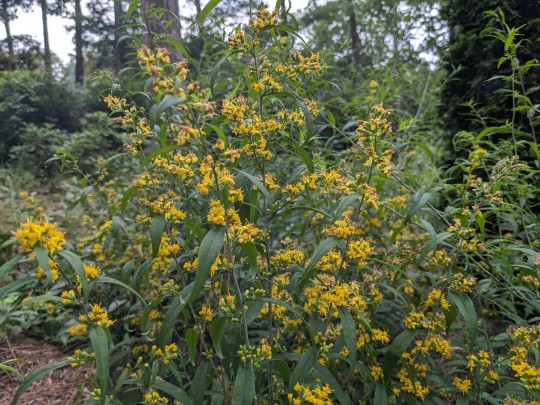
Solidago caesia / Wreath Goldenrod at the Sarah P. Duke Gardens at Duke University in Durham, NC
#Solidago caesia#Wreath Goldenrod#Blue-stemmed goldenrod#Bluestem goldenrod#Goldenrod#Solidago#Native plants#Native flowers#Nature photography#Flowers#Sarah P. Duke Gardens#Duke Gardens#Duke University#Durham#Durham NC#North Carolina
1 note
·
View note
Text

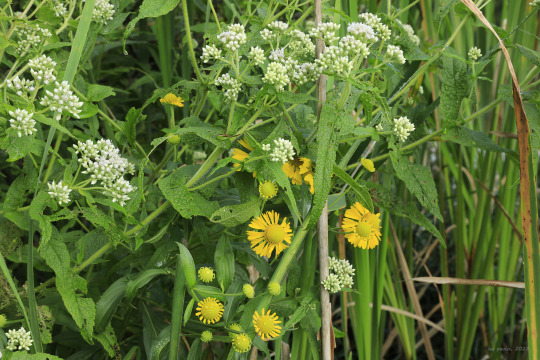




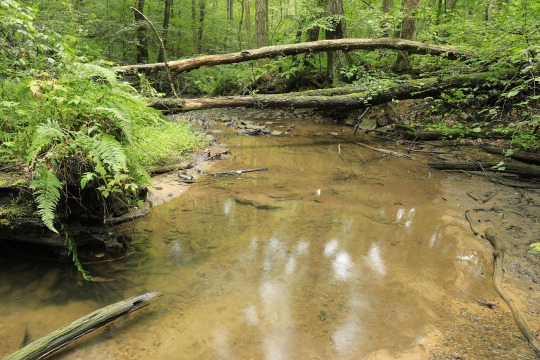


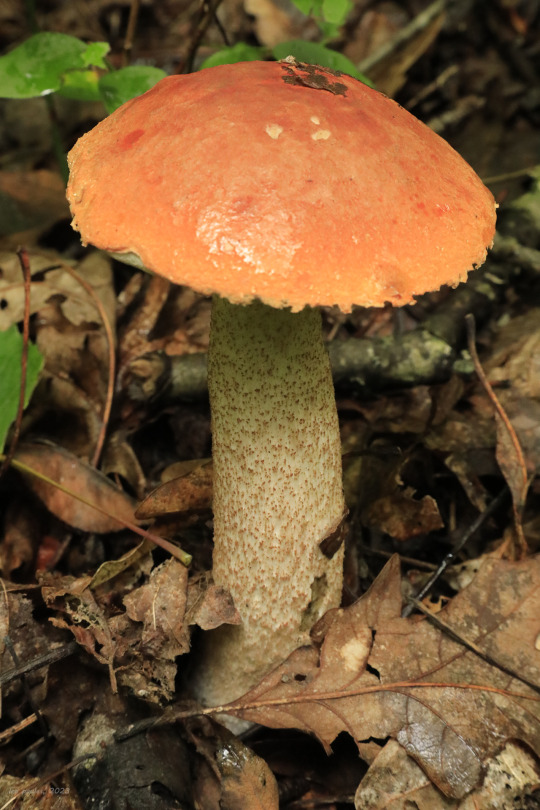
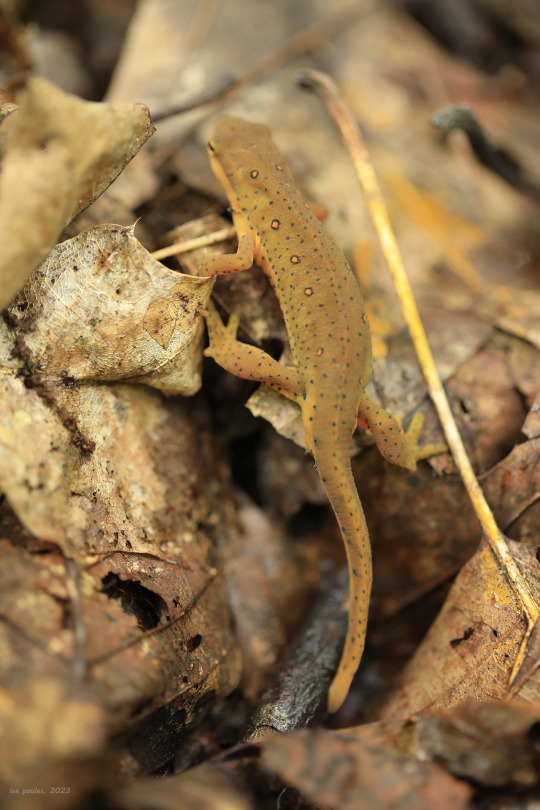


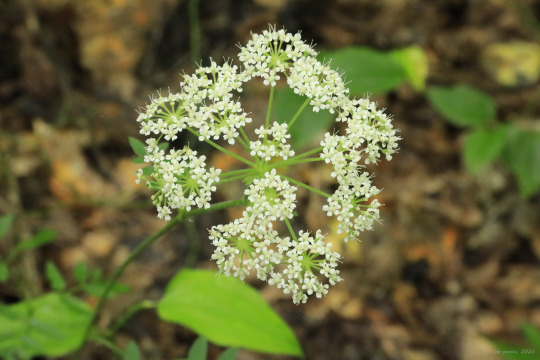


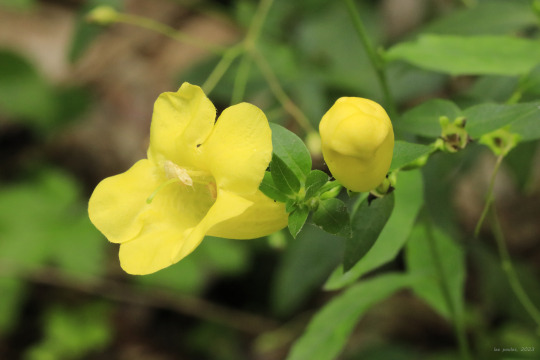

The one thing that excites me more than a pop-up summer thunderstorm is a walk in a damp, dripping, glowing-green forest after the storm has passed. The forest's living essence is made all the more real and immediate by the intoxicating perfume of decaying things, creatures flitting like ghosts through the leaves and underbrush, and clinging raindrops unleashed from the treetops by an evanescent breeze. Photos above are from a hike this morning on Glade Run Trail in Coopers Rock State Forest.
From top: common boneset (Eupatorium perfoliatum), which is closely related to Joe Pye weed, and sneezeweed (Helenium autumnale); the deep purple-red berries of common elderberry (Sambucus canadensis); hollow Joe Pye weed (Eupatorium fistulosum), which can attain a height of 7 to 8 feet; eastern tiger swallowtail (Papilio glaucus), whose tattered wings show the wear and tear of summer errands; a colony of gregarious fungi, perhaps cross-veined troop mushroom (Xeromphalina kauffmanii), which grow in huge numbers on decaying hardwoods; a red-capped bolete, perhaps Leccinum longicurvipes, which is symbiont with oak trees; an eastern newt (Notophthalmus viridescens); white wood aster (Eurybia divaricata); bigleaf aster (Eurybia macrophylla); cowbane (Oxypolis rigidior), also known as common water dropwort; bluestem goldenrod (Solidago caesia), a woodland goldenrod with flowerheads in the leaf axils; and Appalachian oak-leach (Aureolaria laevigata), also known as smooth false foxglove, which is semi-parasitic on oak tree roots.
#appalachia#vandalia#west virginia#wildflowers#flora#summer#coopers rock state forest#glade run trail#common boneset#sneezeweed#common elderberry#hollow joe pye weed#eastern tiger swallowtail#butterfly#lepidoptera#eastern newt#amphibian#fungi#bolete#white wood aster#bigleaf aster#cowbane#common water dropwort#bluestem goldenrod#blue-stemmed goldenrod#wreath goldenrod#appalachian oak-leach#smooth false foxglove
137 notes
·
View notes
Text
Garden adventures! There is a native buttercup growing in the raised stone bed that I did not plant! Ranunculus recurvatus (blisterwort), welcome! Unfortunately I can’t eat it*, but as long as it’s not an aggressive spreader it will stay. In addition there are what appears to be two different species of goldenrod that I don’t have and didn’t plant, one in the front sunny area, and one in the back shady area, which are more than likely native (I think Solidago gigantea and Solidago caesia), but I’ll have to wait till they mature more before I can be positive on the identification. And there’s something shooting up right in the middle of my field pussytoes! I can’t even guess at what it might be. I’ll have to wait until it flowers. But that’s potentially four new native species in my garden that just showed up naturally through seeds come out of dormancy, wind-blown seeds, or animal activity!
*There are few edible Ranunculus species (and even those are poison without the correct preparation), and only one commercially available, but you know, there’s always room for experimentation...
5 notes
·
View notes
Text
Solidago caesia
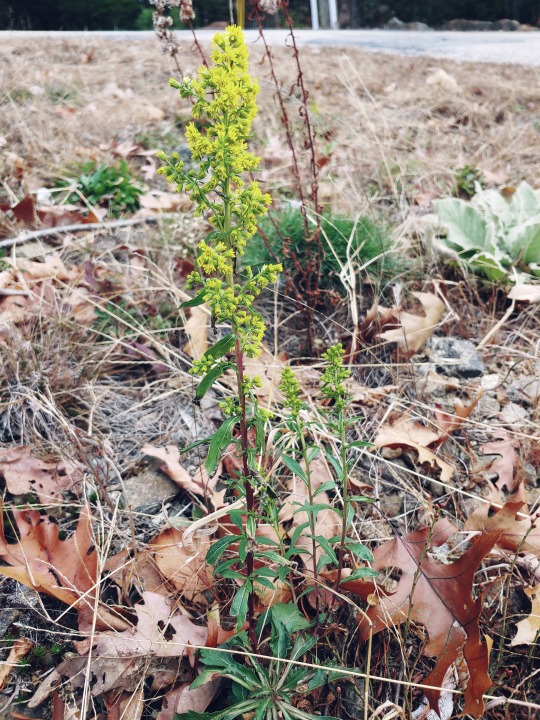
Solidago caesia
Common Name: Blue-stemmed goldenrod, wreath goldenrod
A note on Identification: My first try identifying this plant using my field guide led me to believe it was Solidago (Euthamia) graminifolia, the lance-leaved Goldenrod. However, upon further inspection of online photos of the flowers I realized it was not a match (the Blue-stemmed goldenrod has visibly distinct petals). I highly recommend this webpage for distinguishing common goldenrods if you live in New Hampshire like I do: http://www.newhampshirewildflowers.com/goldenrod.php
I determined that this flower is a blue-stemmed goldenrod because of: a) its straight (”wand”) form, b) its wide leaves, and c) the petals on its flowers (see photos below for flower close-ups). Like other goldenrods, Solidago caesia is part of the daisy family and is native to central and eastern North America. It can reach heights of 1.5 to 3 feet and blooms in late summer to fall.
The blue-stemmed goldenrod is good for native gardens because it does not spread as aggressively as other goldenrods. While this plant is not very palatable to humans or animals, it is very pollinator-friendly. It also tolerates deer, drought, and clay soils. I found this plant growing along the road, still in bloom in November.
Growth preferences:
Full sun to part shade
Dry to moist conditions
Average, well-drained soil (can tolerate poor soil)
Zones 4 though 8
Web references:
http://www.newhampshirewildflowers.com/goldenrod.php
http://www.missouribotanicalgarden.org/PlantFinder/PlantFinderDetails.aspx?kempercode=y370
https://plants.ces.ncsu.edu/plants/solidago-caesia/
Photos taken in Dunbarton, New Hampshire on November 18, 2020
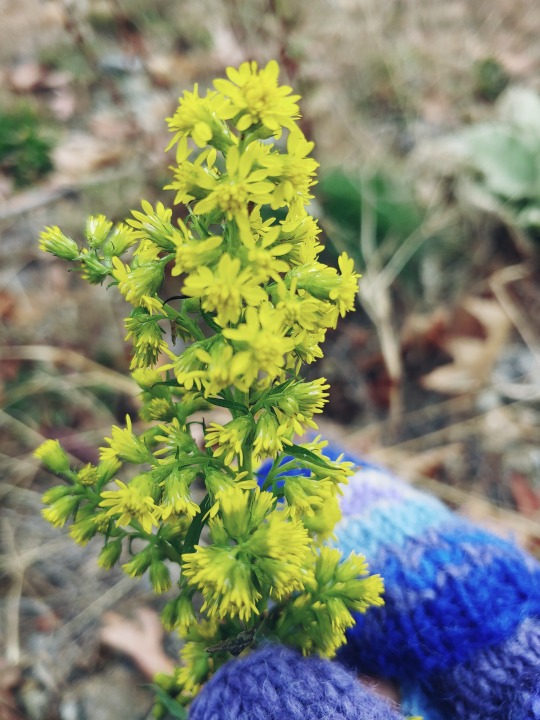

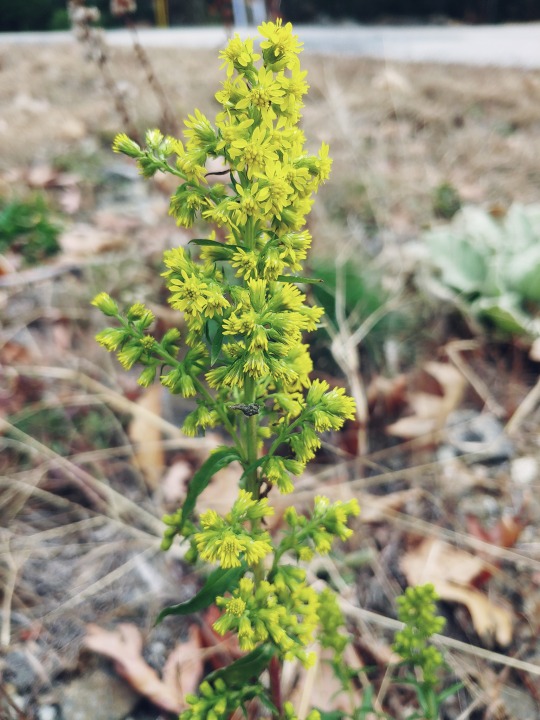
0 notes
Photo


Solidago caesia
Bluestem goldenrod.
23 notes
·
View notes
Text
Fewer and even more appreciated: late season wonders by Elizabeth Licata
My potted salvia would like to take over the world.
I do not have the greatest of September gardens. My urban space is more calibrated to midsummer, the time of Garden Walk, lilies, and many flowering perennials. I also love my garden in spring, when it’s taken over by tulips and other bulbs. But by this point in the season, I’ve grown weary of watering, staking, and deadheading and am beginning to appreciate the break that winter provides.
That’s not to say that this time of year doesn’t provide its own lush beauty. Colocasia have grown and multiplied to provide immense sculptural canopies. Coleus are equally explosive, dwarfing their unseen pots. While some flowering annuals have given up the ghost, this is definitely salvia’s time. And, of course, a number of midsummer perennials are still providing blooms.
Just one on David Austin ‘Charlotte’
Do I regret not planting Knock Outs instead of roses like this David Austin that is currently featuring one, gorgeous, fragrant bloom? I do not. I’ll take my one rose over ten KOs covered in boringness. The DAs will produce, sparingly, throughout October, and I’ll enjoy them despite, or even because of, the minimal output.
solidago caesia
And what about this delicate spire of solidago cassia? I have some showier varieties yet to come but this is the daintiest solidago I’ve yet seen and I’m glad I planted it. An unknowing visitor would barely notice it; it’s one of those you have to (annoyingly) point out.
This is also the time I appreciate the boehmeria, which is now producing its weird, pipe-cleaner-like flowers and, always, my hydrangea paniculata varieties, which own late summer around here.
It’s a time that allows one to focus, to look with a certain degree of awe at just this, this one amazing thing.
Fewer and even more appreciated: late season wonders originally appeared on Garden Rant on September 4, 2018.
from Garden Rant http://www.gardenrant.com/2018/09/fewer-and-even-more-appreciated-late-season-wonders.html
0 notes
